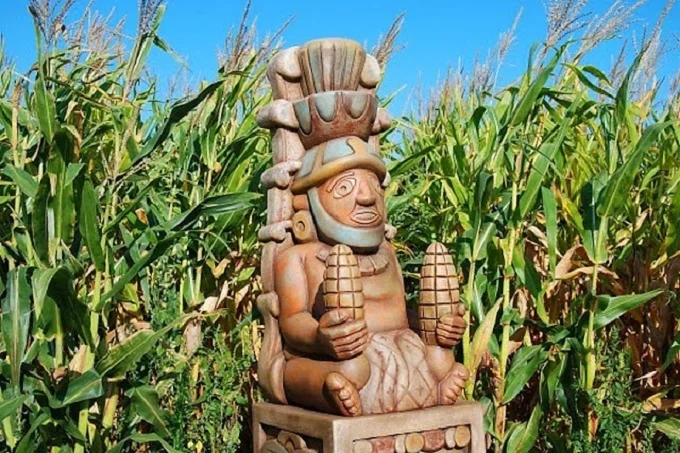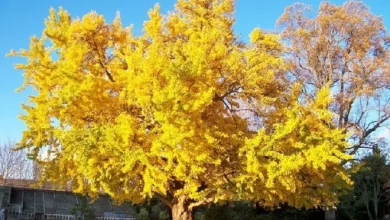Is corn a gift from the gods?

Corn, which we often consume in canned form in salads or the shape of sweet or salty popcorn, has a long and illustrious history. There are a number of black spots in the history of this fairly popular cereal’s origins all over the globe.
Corn (also known as maize) is the world’s oldest cultivated plant. Corn pollen from 55 thousand years ago was discovered during excavations in Mexico City! Corn’s chemical makeup nearly totally meets human nutritional requirements.
According to recent research, this cereal provides the essential vitamins A, B, C, E, folacin (B9), niacin (B3), and thiamine (B1). Maize has a lot of potassium, magnesium, and even gold in it. Furthermore, unlike cereals such as rye or wheat, maize has a high level of fiber and no gluten, which is critical for patient nutrition.
Corn, however, has never been shown to have wild relatives, indicating that it has always been domesticated. And it’s not the most astonishing thing about maize — its greatest mystery is that it can’t grow without human intervention! It can’t reproduce by self-seeding and running wild – a mature cob of corn kernels will just fall to the ground and die without producing “offspring” if human hands don’t remove it.
These enigmatic features of maize, according to paranormal researchers, can only be explained by its extraterrestrial origin — once this crop was given to humanity by creatures who fell from heaven and were worshipped by earthlings as gods.
Here’s what astrologer Raul Rodriguez has to say about it: “The most basic corn is the most fundamental proof that mankind is of extraterrestrial origin. Corn requires the care of human hands in order to reproduce. Rice or wheat, for example, may grow on their own; their seeds will be delivered by animals. Corn, on the other hand, is incapable of reproducing without human assistance. Corn is a gift from the deity Kukulkan, or Quetzalcoatl, as the Aztecs named him. Furthermore, according to tradition, the man was made from grain. If not gutted by hand, an ear of corn coated in leaves will perish.”

This version is supported by ancient Aztec mythology. Corn is said to be the gift of Quetzalcoatl, the “main” deity. It was a genuinely fantastic present since corn is easy to produce, and you can eat for an entire day with just one cob. And, in Central and South America’s climatic circumstances, the harvest may be removed four times a year!
Fertilizer for herring
“Maize turned out to be a greater gift of nature that contributed to the early advancement of humanity than all other cereals combined,” observed American scientist L. Morgan, “owing to its adaptability for ingestion both in green and mature condition, its high yield, and nutritional content.”
Corn formed the cornerstone of the ancient Indians’ diet, extended throughout both American continents, and was responsible for forming and strengthening the world’s most fascinating and ancient civilizations, the Maya, Aztecs, and Olmecs. The ancient Indians learned to master crafts and adopted a sedentary lifestyle, and towns and arts arose due to receiving such an easy-to-process and tasty diet. And savage tribes were still roving Europe at the time…
The very first farmers grew rich harvests of maize and learned to cook a variety of dishes from it. Corn was boiled, fried, baked, flour, and even wine were made from it. And the leaves and stalks of corn were used for various household needs — they were filled with mattresses used for the production of clothes and shoes.
Surprisingly, the ancient Indians were aware that maize required fertilization. They also fertilized the maize by planting it with a whole fish in a newly dug hole with a corn grain – since fish were plentiful in these areas…
Maize has taken to the streets of the world
The mighty corn empire kindly shared its bounty with the rest of the world. Columbus took maize seeds from the new continent when he found America, among other things. Corn first appeared before a Spanish court, then appeared in France, Portugal, and Italy.
I must emphasize that the expansion of maize was not followed by the same catastrophes as the spread of potatoes – in Europe, people were unaware that they needed to consume potato tubers, and some people died from eating the toxic fruits — green berries. No, with corn, all was apparent — nutritious and healthful grains appealed to both the affluent and the poor.
Corn traveled from Europe to India, Africa, and China, where it proved to be a lifesaver for these nations’ hungry populations.
Surprisingly, although this crop is known as maize — an old Indian term – practically everywhere else, it is recognized as corn in some places. This word’s etymology has not been fully determined. According to one story, it originates from the term “curly,” while another claims that ancient Slavs used the word “kukuru” to refer to their livestock (similar to how there is a call “chick-chick” for chickens).
However, maize is one of the most common grains in the United States. “Corn is the glue that keeps such a varied country as the Americans together,” says one phrase.
Surprisingly, just 1% of the maize cultivated in the United States is used to feed people. Cows and pigs consume 85 percent of it, and the US meat and dairy sector rank first in the world owing to this grain. And the remaining 14% make a variety of food and non-food items, such as maize whiskey, toothpaste, and cough medication…
That’s how much advantage a simple and modest plant can provide! And although the origins of maize are unknown, it is without a doubt humanity’s greatest gift, having had a profound influence on its history and culture… To get the latest stories, install our app here




